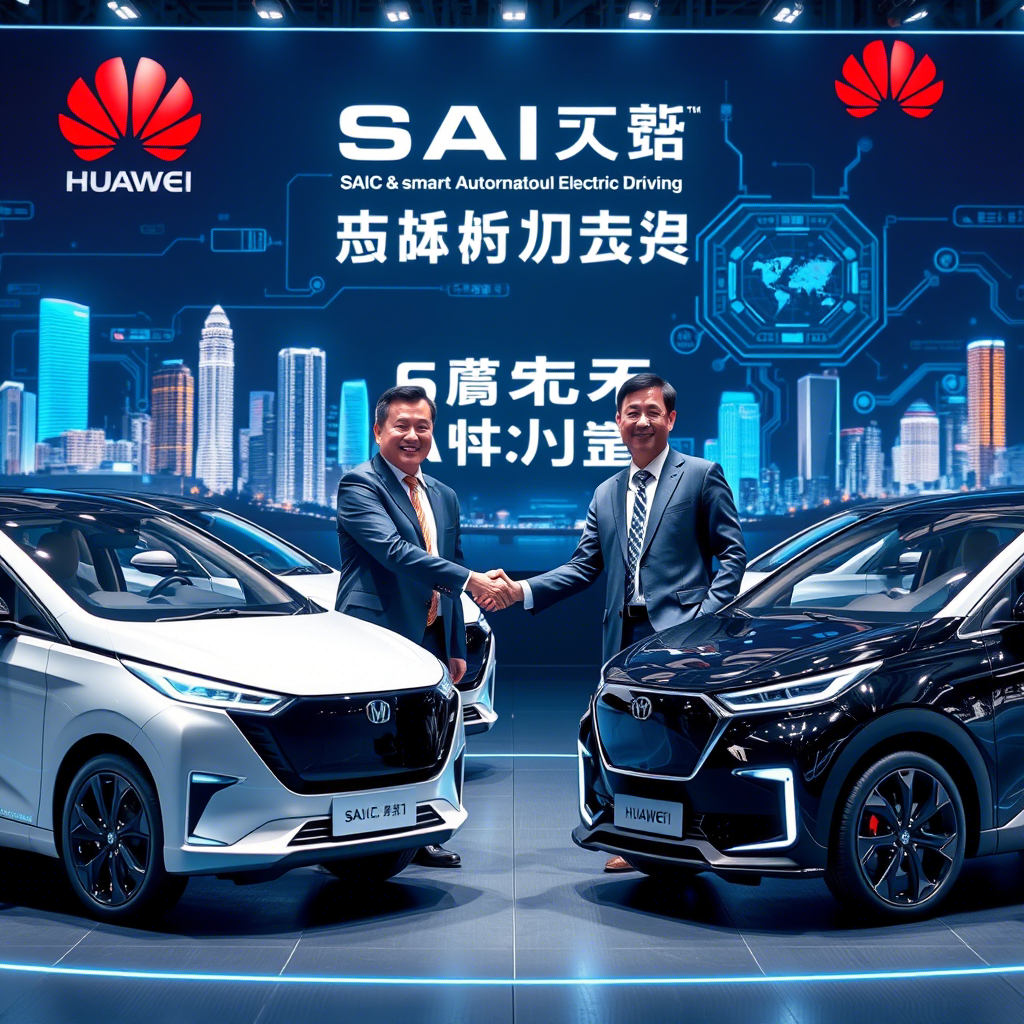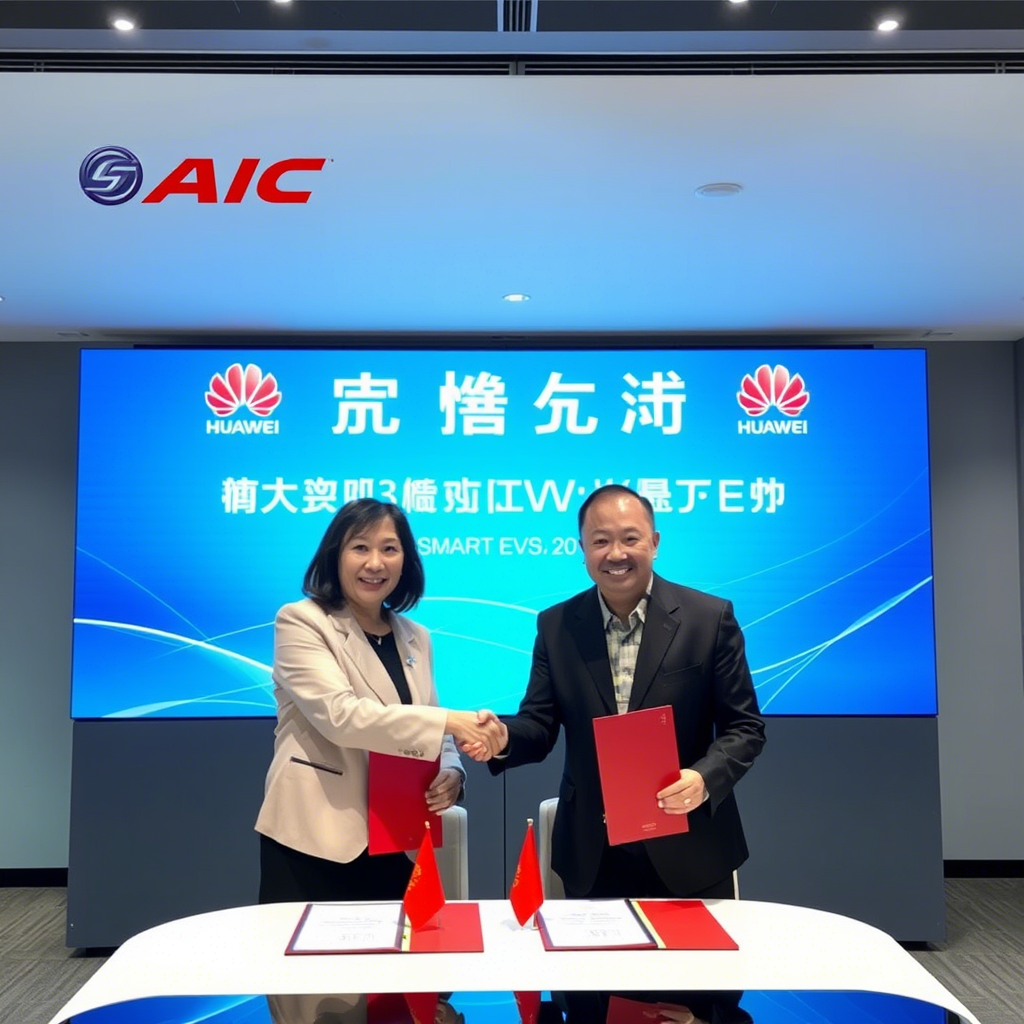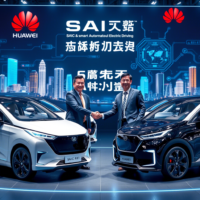In the rapidly evolving world of electric vehicles (EVs), partnerships between automakers and tech giants are becoming increasingly common. One such collaboration is between SAIC Motor Corporation Limited (SAIC) and Huawei Technologies Co., Ltd. This strategic alliance aims to develop cutting-edge smart EVs that combine advanced automotive engineering with state-of-the-art digital technology. In this blog post, we will explore the details of this partnership, its implications for the EV industry, and how it could shape the future of mobility.
Introduction: The Rise of Smart EVs
The global shift towards sustainable transportation has accelerated the development of electric vehicles. However, modern consumers expect more than just an eco-friendly mode of transport; they want vehicles that are intelligent, connected, and capable of enhancing their driving experience. Enter “smart EVs,” which integrate artificial intelligence (AI), autonomous driving capabilities, and seamless connectivity into traditional EVs.
China, as the largest EV market in the world, plays a pivotal role in shaping this transformation. Homegrown companies like SAIC and Huawei are at the forefront of innovation, leveraging their expertise to create next-generation vehicles. Their collaboration represents a perfect marriage of automotive manufacturing prowess and technological ingenuity.
Who Are SAIC and Huawei?
SAIC Motor Corporation
Founded in 1984, SAIC is one of China’s largest and most established automotive manufacturers. It operates under several brands, including MG, Roewe, and Wuling, and has joint ventures with international giants like Volkswagen and General Motors. With decades of experience in vehicle production, SAIC brings deep knowledge of automotive design, manufacturing processes, and customer preferences to the table.

Huawei Technologies
Established in 1987, Huawei is renowned worldwide for its telecommunications equipment, smartphones, and AI solutions. Although not traditionally associated with the automotive sector, Huawei has been expanding its footprint in the EV space by developing software platforms, chips, and sensors tailored for smart vehicles. Its HiCar system and HarmonyOS operating system have already gained traction among carmakers seeking to enhance user experiences.
The Partnership: Combining Strengths for Innovation
In early 2023, SAIC and Huawei announced their intention to collaborate on developing new smart EVs. While specific details about the project remain under wraps, the partnership leverages each company’s unique strengths:
- SAIC’s Role: As the manufacturer, SAIC will focus on designing and producing high-quality EVs while ensuring compliance with safety standards and regulatory requirements.
- Huawei’s Contribution: Huawei will provide its advanced technologies, including AI-driven systems, 5G connectivity, and autonomous driving solutions. These components will enable features such as over-the-air (OTA) updates, real-time navigation, and enhanced driver assistance.
This synergy allows both companies to deliver innovative products faster and more efficiently than if they worked independently.
Key Features of the Upcoming Smart EVs
The upcoming lineup of smart EVs from SAIC and Huawei promises to redefine what customers expect from an electric vehicle. Here are some anticipated highlights:
1. Autonomous Driving Capabilities
One of the standout features of these EVs will be their advanced self-driving functions. Equipped with Huawei’s sensor suites and computing hardware, these vehicles aim to achieve Level 4 autonomy, where the car can operate without human intervention in certain conditions. This level of automation will significantly improve convenience and safety for drivers.
2. Seamless Connectivity
With Huawei’s 5G technology integrated into the vehicles, users can enjoy lightning-fast internet speeds, enabling features like streaming entertainment, video conferencing, and real-time traffic updates. Additionally, the cars will feature OTA software updates, allowing owners to access the latest features and improvements without visiting a dealership.
3. Enhanced User Experience
Huawei’s HarmonyOS platform will power the infotainment systems, offering a user-friendly interface and personalized settings. Voice assistants, gesture controls, and augmented reality displays will further elevate the driving experience.
4. Energy Efficiency
As part of their commitment to sustainability, SAIC and Huawei are likely to incorporate cutting-edge battery technologies that maximize range and reduce charging times. Solid-state batteries or silicon-anode cells may be employed to achieve superior performance.
Implications for the EV Industry
The collaboration between SAIC and Huawei holds significant implications for the broader EV industry:
1. Accelerating Technological Adoption
By combining automotive expertise with cutting-edge technology, SAIC and Huawei set a benchmark for other players in the market. Their efforts demonstrate how traditional automakers can adapt to changing consumer demands by partnering with tech firms.
2. Strengthening China’s Position in Global Markets
China is already the leading producer and consumer of EVs globally. This partnership reinforces the country’s dominance in the sector, showcasing its ability to produce world-class smart EVs that compete with offerings from Tesla, BMW, and other international brands.
3. Fostering Competition and Innovation
The entry of powerful alliances like SAIC-Huawei into the smart EV space increases competition, driving other companies to innovate and improve their offerings. This benefits consumers, who ultimately gain access to better products at competitive prices.
Challenges and Risks
Despite its promising potential, the SAIC-Huawei partnership faces several challenges:
1. Regulatory Hurdles
Both companies must navigate complex regulations related to data privacy, cybersecurity, and autonomous driving. Ensuring compliance across different regions will require careful planning and coordination.
2. Market Saturation
The EV market is becoming increasingly crowded, with numerous players vying for market share. Standing out amidst fierce competition will demand exceptional product differentiation and marketing strategies.
3. Geopolitical Tensions
Huawei’s involvement introduces geopolitical risks due to ongoing tensions between China and Western countries. Export restrictions or sanctions could limit the global reach of these smart EVs.

Case Studies: Other Successful Automotive-Tech Collaborations
To understand the significance of the SAIC-Huawei partnership, it helps to examine similar collaborations in the industry:
Ford and Argo AI
Ford partnered with Argo AI to develop self-driving technology for its vehicles. This alliance enabled Ford to accelerate its autonomous driving program while leveraging Argo AI’s specialized expertise.
Volkswagen and Microsoft
Volkswagen teamed up with Microsoft to build a cloud-based platform for connected cars. This collaboration allowed VW to enhance its digital services and improve customer engagement.
These examples highlight the value of cross-industry partnerships in driving innovation and achieving shared goals.
Future Outlook
Looking ahead, the SAIC-Huawei partnership has the potential to revolutionize the EV landscape. By delivering smart, efficient, and technologically advanced vehicles, the duo could capture significant market share and establish themselves as leaders in the industry. However, success will depend on their ability to address challenges, meet consumer expectations, and stay ahead of competitors.
As the global transition to sustainable transportation continues, collaborations like this one will play a crucial role in shaping the future of mobility. Whether you’re a tech enthusiast, an environmental advocate, or simply a curious observer, the journey of SAIC and Huawei in the smart EV space is certainly worth watching.
Conclusion
The partnership between SAIC and Huawei exemplifies the transformative power of collaboration in today’s fast-paced technological environment. By merging automotive excellence with digital innovation, these two giants are poised to deliver groundbreaking smart EVs that cater to the needs of modern consumers. As the automotive industry evolves, alliances like this will undoubtedly drive progress, fostering a cleaner, smarter, and more connected world.

